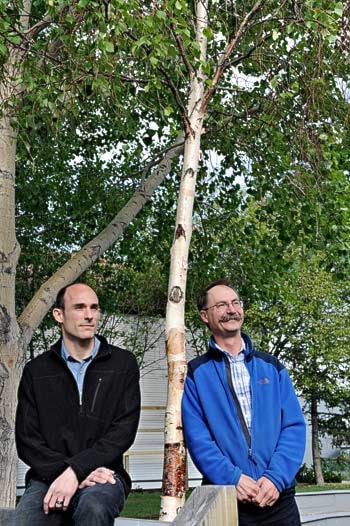Canada’s national parks have always been Canadian treasures, but the idea of what parks really do and represent has changed over the years.
The Yukon has set precedents for that change, say David Neufeld and Brad Martin.
Both have written chapters for a new book, A Century of Parks Canada 1911-2011.
While their work focusses on two different Yukon parks at two different points in history, a common theme emerged.
Both Neufeld and Martin found themselves writing more about the First Nation people of the area than the actual environment.
“The debate changes from being an internal one from Western civilization of, ‘Should we mine it or should we admire it?’ to ‘Oh, there’s somebody else here who has some call on this place,’ and it became a discussion between cultures,” said Neufeld, Parks Canada’s Yukon and West Arctic historian and an adjunct professor at Yukon College.
Neufeld focused his chapter on Kluane National Park and Reserve and the aboriginal people settled around Burwash Landing.
He combed the archives to find Parks Canada had a presence in the area since the 1920s. It was around the same time the mining industry took a dive, wrote Neufeld in his chapter. Other ways of making money - largely outfitting companies and fur farms - were brought in and threats to kick aboriginal people out of land designated for protected parks began in the 1930s and ‘40s.
Neufeld’s chapter chronicles aboriginal peoples’ impressive protests to the rules being imposed on them - rules that spanned hunting restrictions to displacement.
He quotes a petition and letter written from the Burwash people to Yukon Indian Agent J.E. Gibbon in 1946.
“We most firmly protest against these conditions forced upon us,” it reads. “For we are thus deprived of our means of subsistence and development; we, the natives of this country, are being driven away like a pack of useless dogs.”
The letter outlines hunting restrictions and the planned park borders that include their land except a far-off portion that is inaccessible during some seasons.
“I looked at how the state squashed and made invisible those protests and then finally acknowledged them as the state changed its understanding of what aboriginal people were in Canada,” he said.
It was a change that really started to happen in the 1960s and 70s.
Martin’s chapter picks up here, where Neufeld finishes off.
Focusing on the most northern Yukon Park, Ivvavik National Park, the instructor of Yukon College’s heritage and culture program chronicles how the Inuvialuit’s land-claim negotiations were essential to the establishment of the park.
“The chapter really explores how land claim negotiations have served as a tool for First Nation groups to influence how conservation on their traditional territories is practiced,” said Martin. “The Inuvialuit, anyway, were relatively successful in transforming how people think about national parks, how they think about ideas like wilderness, what that term means and, ultimately, on its grandest scale, how Canadians, in general, think about their relationship with nature.”
Historically, in western thought, nature and humans are grouped in separate circles. Aboriginal culture considers these two circles much more closely connected, he said.
Canadian parks evolved to include culture and the human aspect into the definition of what a park is.
The problem for the North was that it was a colony, he said. With a colony, people are largely sent there to get things, like mineral resources, meat or trophy pelts. Rarely were people from the humanities or intellectual realms ever sent, he said.
But even if First Nations people were considered a part of the attraction of Canadian Parks at first, the example set by the Inuvialuit and Ivvavik in 1984 was that aboriginal people have real, legal rights and title and they must be included in the park’s management.
Martin actually got involved in the writing of his chapter from an academic perspective. He studied the civil rights and environmental movements, and how aboriginal people were responsible for bringing those two movements together into what is largely recognized now as the environmental justice movement.
“Those larger cultural and political trends that were taking place in southern Canada and the United States affected, what I considered at the time, to be a very remote and isolated place in the North,” said Martin. “One of the things that I have come to understand over the years is that the North is not all that isolated and remote when you talk about those sorts of trends, and you can see how they play out, even in a discussion of a relatively small national park on the highest Arctic coast of the Yukon.
“Those really, kind of broad-scale political and cultural changes make their way to the ground of the northern Yukon in discussions of a national park.”
And with chapters from national parks all across Canada, it’s clear evolution in Canadian politics and thought changed the national parks.
This is not another fluffy, picture book, which are the norm for parks across Canada, said both men, noting other chapters, like one that examines the history of Acadian exclusions in Eastern Canada.
The Yukon launch of the new book will take place in conjunction with Parks Day, July 16.
Contact Roxanne Stasyszyn at
roxannes@yukon-news.com
